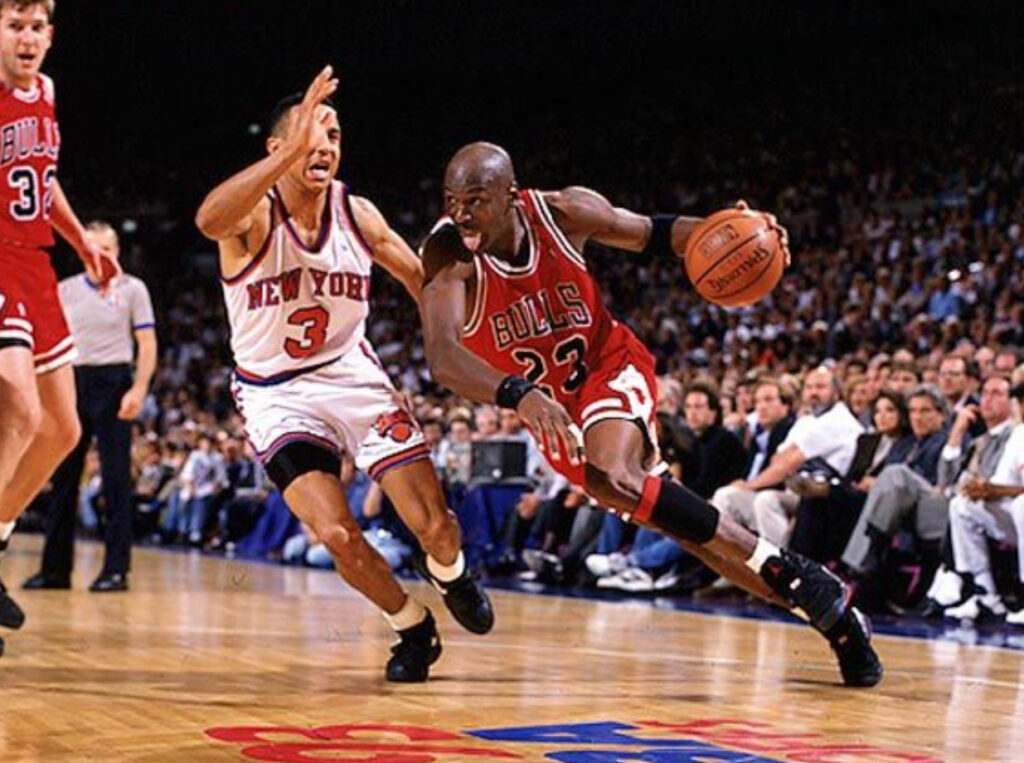The evolution of basketball over the past three decades has been dramatic, but one of the most striking changes is the overwhelming reliance on three-point shooting. What was once a complementary part of the game has now become its focal point. But long before the modern NBA transformed into a perimeter-oriented league, Michael Jordan warned against an overreliance on the three-ball. His message? Prioritizing threes can take away from the essence of attacking the basket, and that shift in mentality can make players less aggressive and less versatile.
Now, 30 years later, Jordan’s words seem more relevant than ever. With teams launching an unprecedented number of three-pointers, critics argue that the game has lost some of its artistry and physicality. Let’s take a closer look at Jordan’s stance, how the league has changed, and whether his concerns have come to pass.
Michael Jordan’s Warning on Three-Point Dependence
During his prime, Jordan was the most dominant scorer the league had ever seen. His offensive repertoire was vast mid-range jumpers, post moves, drives to the basket, and of course, the occasional three-pointer. However, he never embraced the three-point shot as his primary weapon. He understood its value but believed that an overemphasis on outside shooting could limit a player’s overall impression.
Jordan’s s famous words on three-point shooting were clear:
When you have that mentality, you don’t go to the hole as much.
This wasn’t just an offhand remark it was a philosophy rooted in experience. Jordan believed that relying too much on three-pointers could make players complacent and less aggressive in attacking the rim, where high-percentage shots, free throws, and physical dominance are earned. He knew that getting to the basket wasn’t just about scoring; it was about setting the tone, drawing fouls, and putting pressure on defenses.
During his era, the three-pointer was seen as a situational weapon rather than a primary mode of attack. Teams prioritized mid-range jumpers, post-ups, and inside scoring. Players like Jordan, Kobe Bryant, and even LeBron James in his early years developed their games inside-out rather than outside-in. However, today’s game has flipped that approach on its head.
The Three-Point Revolution and Its Consequences
Over the past decade, the NBA has experienced a dramatic three-point explosion, fueled by analytics and the success of teams like the Golden State Warriors and Houston Rockets.
Consider these statistics:
In the 1990s, NBA teams averaged around 10 three-point attempts per game.
By 2010, that number had increased to about 18 attempts per game.
In 2023, teams were averaging over 35 three-point attempts per game.
The three-pointer is now the most dominant shot in basketball, with many teams actively avoiding mid-range shots altogether. This shift has led to both benefits and drawbacks.
Benefits of the Three-Point Boom
More Spacing: The three-ball has stretched the floor, allowing for better ball movement and creating open lanes for drives.
Higher Efficiency: Statistically, a three-point shot (if made at a reasonable percentage) is more valuable than a long two-pointer.
Strategic Evolution: Teams that master three-point shooting can build fast-paced offenses that are difficult to defend.
Drawbacks of Overreliance on Threes
Lack of Versatility: Many players today are one-dimensional, either shooting threes or finishing at the rim, without a strong mid-range or post-up game.
Diminished Physicality: The art of attacking the basket, drawing fouls, and finishing through contact is becoming less common.
Cold Shooting Nights Can Doom Teams: When teams live and die by the three, off-nights become disastrous, as seen in playoff collapses by three-heavy teams.
These consequences align almost perfectly with Jordan’s warning. Today’s players, especially younger ones, often prioritize three-point shooting in their development. While this has produced incredible sharpshooters like Stephen Curry and Damian Lillard, it has also led to a decline in well-rounded scorers who can dominate in multiple areas of the court.
How Would Jordan Fit in Today’s NBA?
Had Jordan played in today’s era, there’s s little doubt he would still be dominant. But would he have conformed to the three-point-heavy approach, or would he have maintained his inside-out philosophy?
Many believe Jordan would have adapted his game but not abandoned his principles. He was never a poor three-point shooter he shot 37.6% from deep in the 1995-96 season, proving that he could excel when necessary. However, his game was built on balance: mid-range mastery, aggressive drives, and elite footwork.
Players like DeMar DeRozan and Kevin Durant provide glimpses of what a modern Jordan might look like. DeRozan has thrived as a mid-range specialist despite playing in a three-heavy league, while Durant combines lethal outside shooting with a deadly mid-range and post-up game. Both players prove that a Jordan-esque approach can still succeed today.
In fact, it’s likely that Jordan’s ability to dominate in multiple areas would make him even more dangerous in today’s game, where defenses struggle to guard diverse scorers. While many players are predictable in their three-or-rim approach, Jordan’s versatility would make him nearly unguardable.
Are Teams Reconsidering Jordan’s Advice?
Interestingly, there are signs that some teams are rethinking the three-point obsession. In recent years, there has been a resurgence of mid-range scorers and a recognition that variety in shot selection is crucial in high-stakes games.
The Denver Nuggets Balanced Attack Led by Nikola JokiÄ, the Nuggets emphasize a mix of post-ups, mid-range shots, and threes rather than relying solely on perimeter shooting.
The Phoenix Suns Mid-Range Specialists Devin Booker and Kevin Durant have demonstrated the importance of the mid-range game, particularly in the playoffs, where three-point efficiency can dip under defensive pressure.
The 2021 Milwaukee Bucks Championship Formula Giannis Antetokounmpo led the Bucks to a title by dominating the paint, reinforcing the value of interior scoring.
These teams suggest that Jordan’s approach valuing inside scoring, mid-range efficiency, and driving to the basket is still vital in a well-rounded offensive system.
Impression
Thirty years after Jordan’s warning, the NBA has seen both the highs and lows of the three-point revolution. While the three-ball has undeniably revolutionized the game, Jordan’s concerns about its overuse have proven valid. Many players and teams have become too reliant on outside shooting, sometimes at the cost of physicality, versatility, and balance.
No comments yet.








